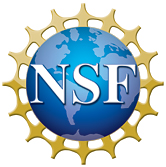Main Page
Jump to navigation
Jump to search
Intro to CoGe
Welcome to CoGepedia, CoGe's Official Wiki
Here you can find information pertaining to the CoGe Comparative Genomics suite of web-tools, including:
- Frequently Asked Questions
- Documentation
- Tutorials
- How to get a CoGe account
- How to add a private genome to CoGe
- Background on comparative genomics terms and science
- New to CoGe
- What is needed to run CoGe?
- Getting more help

